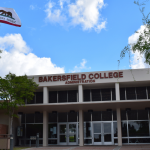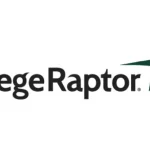When you’re a leader in the world of higher education, it seems like the questions are endless. Admissions, financial aid and now pandemic-era restrictions and requirements. It can be challenging for administrators, faculty, staff and students to keep up.
Students are making a big investment of time and money to continue their education, so it’s vital they understand what they need to do, when to do it, why they need to do it — and how that all connects with their success. Because the landscape of colleges and universities is so competitive, and because students have more choices than ever, students often make their choices based on their first impressions and interactions (which overwhelmingly take place online). If they can easily find the answers they need, you’re already ahead of the admissions and enrollment game.
Ocelot has been helping colleges and universities help students help themselves since 2003. We named our company after the wild cats who are extraordinary pathfinders (and remarkably adaptable, too). We want your students to be pathfinders, too, taking ownership over their own educational journeys.
At Ocelot, we work with nearly 500 institutions and run the largest chatbot network in higher education. Our platform supports over 30 different departments, with a large and growing knowledge base of content, including thousands of videos, designed to engage students while driving enrollment and retention. Last year, our AI tools answered more than 8 million student questions. That’s why we’re confident we can help you navigate the process of leveraging and utilizing an AI-powered chatbot for your institution.
Let’s start with understanding a few basics about AI and natural language understanding. Then we’ll cover the four main kinds of chatbots: how they work, how they’re best used and which one will work best for your needs.
Not All Bots are AI-Powered
Not all chatbots are created equally. The most basic types (menu and keyword bots) rely on decision tree hierarchies or the presence of existing keywords to serve users information. The other two (single-tenant and multi-tenant bots) are known as contextual chatbots, which constantly learn based on their interactions with users.
Contextual chatbots use natural language processing (NLP), a branch of artificial intelligence (AI) that gives computers the ability to understand text and spoken words. If you’ve verbally dictated an email on your phone or asked your car’s GPS to map your route home, you’ve interacted with NLP technology.
In the case of an AI-powered chatbot, you can mistype or misspell words, ask multi-part questions and even discover topics it suggests to you, all based on your “dialogue.”
Here’s an overview of the four kinds of chatbots and how they work:
Menu Bots
Also known as the “point-and-click chatbot,” this bot is driven by a menu. Users choose menu items, which guide them to additional menu items, eventually arriving at answers. Typically, users are presented with a list of options to select from — (i.e., buttons that get more specific as the topic narrows).
The advantage of menu bots, from an administrative standpoint, is that you can guide conversations through the menu items and customize content accordingly. But these bots do not use natural language processing, so they can’t anticipate the many different misspellings and phrasing variations users will input. As a result, they can’t provide contextual suggestions based on what the student asks. It’s harder to switch between topics, as well.
Keyword Bots
Keyword bots are similar to menu bots, but they return results solely based on combinations of customizable keywords. They also do not make use of deep natural language processing and cannot make contextual suggestions. They may be sufficient when users typically ask just a few questions, but these bots have difficulty handling redundancies, so they’re not ideal for answering interrelated and nuanced questions.
Some chatbots feature a hybrid menu and keyword approach, but neither “learns” on an ongoing basis like single-tenant and multi-tenant chatbots do.
Single-tenant Chatbots
These AI-powered chatbots do make use of natural language processing, which provides contextual suggestions and supports multiple topics. That’s why they require a lot of AI training. When a school or an organization launches a single-tenant chatbot, their chatbot is “born” the day it goes live. It’s brand new, so it needs time to take in information and grow to understand all of those different misspellings. It will learn — but it will take time.
Multi-tenant Chatbots
This is the approach we use at Ocelot. Our platform is just one instance of AI-powered technology shared by hundreds of clients. This means that while each institution answers questions the way it wants to, all of our bots benefit by learning from our many clients to better understand student intents. Each of our bots is uniquely branded and returns only results relevant to a specific school’s users.
Over nearly 20 years of innovation in the higher education space, we’ve found that today’s students interact best with AI-powered bots. Students tend to talk about multiple topics at once, so they’re not always following a logic or rule-based conversation flow. We often see users ask financial aid questions, which are immediately followed by separate queries about a completely different subject – like whether COVID testing is offered on-site. A multi-tenant approach is the fastest way to pivot between topics.
It is also the best way to incorporate natural language processing. Most students, especially adult learners, are constantly multitasking. They’re researching colleges while competing with other day-to-day activities like commuting to and from work, running errands or taking care of their children. They’re not necessarily sitting down in front of a computer typing thoughtful questions — they just want quick, easy answers. The extra contextual level of natural language is what AI needs to understand what the user is looking for. Then it can not only provide the answer, but it can offer suggestions as well. In doing so, the tool can help users find related questions they hadn’t thought to ask yet.
How does Ocelot do this? Those 8+ million student interactions with our chatbots last year, plus the millions more interactions between users and our product since it went live in 2018. We’re learning from each and every one of these interactions. So when you launch your Ocelot-powered chatbot, it’s a mature AI on day one (and continues to mature from that day forward).
The Wrap
There are many chatbot options that exist on the market, but choosing which type of chatbot to use for your institution requires a fundamental understanding of the strengths and weaknesses of each model and how your users will leverage the technology tool.
Multi-tenant chatbots, like Ocelot’s, enable colleges and universities to harness natural language processing, generating meaningful answers and information as a direct result of their queries. The tool exists as a mature, AI-powered bot from day one, meaning that your students, faculty and staff will experience positive and useful interactions from first use.
Want to learn more about how nearly 500 educational institutions leverage Ocelot’s AI Communications Platform to drive enrollment, retention and student success? Get a demo today!















